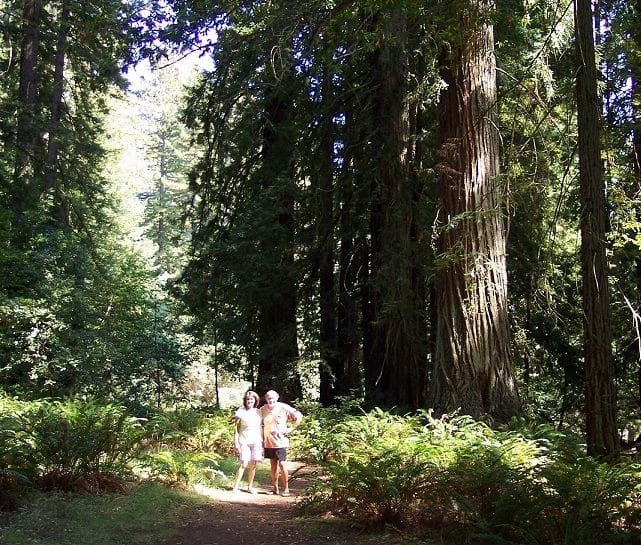“I think I shall never see a poem as lovely as a tree.” – Joyce Kilmer
The line above is from a rather trite poem by Joyce Kilmer that expresses her wonder of trees. Trees and forests are one of the most fascinating aspects of ecology. If you’ve spent time visiting or living among the Redwood trees in Northern California, it’s almost impossible to describe the awe-inspiring beauty found in these ancient forests. Everyone should visit the California coast from Eureka to Oregon to experience this natural wonder.
Planting new trees is a great way to help reduce air pollution and begin a new cycle of life. There is, however, another equally important environmental initiative when it comes to trees: preserving the old ones. New trees are fantastic for providing oxygen, but trees in ancient groves do much more than that, they are vital for the preservation of freshwater.
Several years ago, a local, California landowner had filed a Timber Harvest Plan for a 40 acre ridge-top grove of virgin redwoods that were 1,000 years old. The original owner had subdivided part of his property for homes several years back and had told all the residents that the grove was protected. Unfortunately, after he died his children went against his wishes and were planning on selling the timber for a quick buck. Dr. Dan Wickham, SludgeHammer’s founder, was asked to intervene. He went through the county records and discovered that the property had never been properly protected through a legal order, so the neighbors were going to have a difficult road ahead to fight the desolation of this ancient grove.
Luckily, they had Dr. Wickham on their side who looked into the issue further with a scientific lens to the protection and preservation of ancient groves.
When the property had been subdivided it was approved conditionally to the availability of water. In California water can be an issue because rain only falls in the winter, even though the north coast gets a lot of rain. For six months of the year there is not a drop.
This begs the question, how do redwoods survive such a long, annual drought? The coast of California is unique. The ocean is very cold because the winds push water offshore and it is replaced by deep cold water. When warmer offshore air is drained it rises up the coastal ridge and condenses into fog. Redwood needles are ideally shaped to create droplets from this fog, and they drop down to the soil as a gentle rain when it is foggy. This lifesaving fog occurs in the summer so that the redwoods can create their own rain during the dry season. The fog-rain can be a significant amount, up to 15 inches in a season.
The family’s proposal to cut the redwood grove down would actually eliminate much of the necessary freshwater that the family had guaranteed to the people who bought property in their development. With this knowledge behind them, the homeowners were able to get together and sue the Department of Forestry over the Timber Harvest Plan. Dr. Wickham filed a deposition to the court that covered the Fog-Drip research and this important research was enough to persuade the judge that the THP had to address this issue in a full Environmental Impact Report. The family that owned the grove chose instead to sell the land to the Sonoma Land Conservancy, where these 1,000 year old trees would be protected.
The conservancy turned the grove into a local park. Dr. Wickham now finds himself about to wander through this grove of ancient towering trees with the satisfaction of having a hand in its continued existence.






